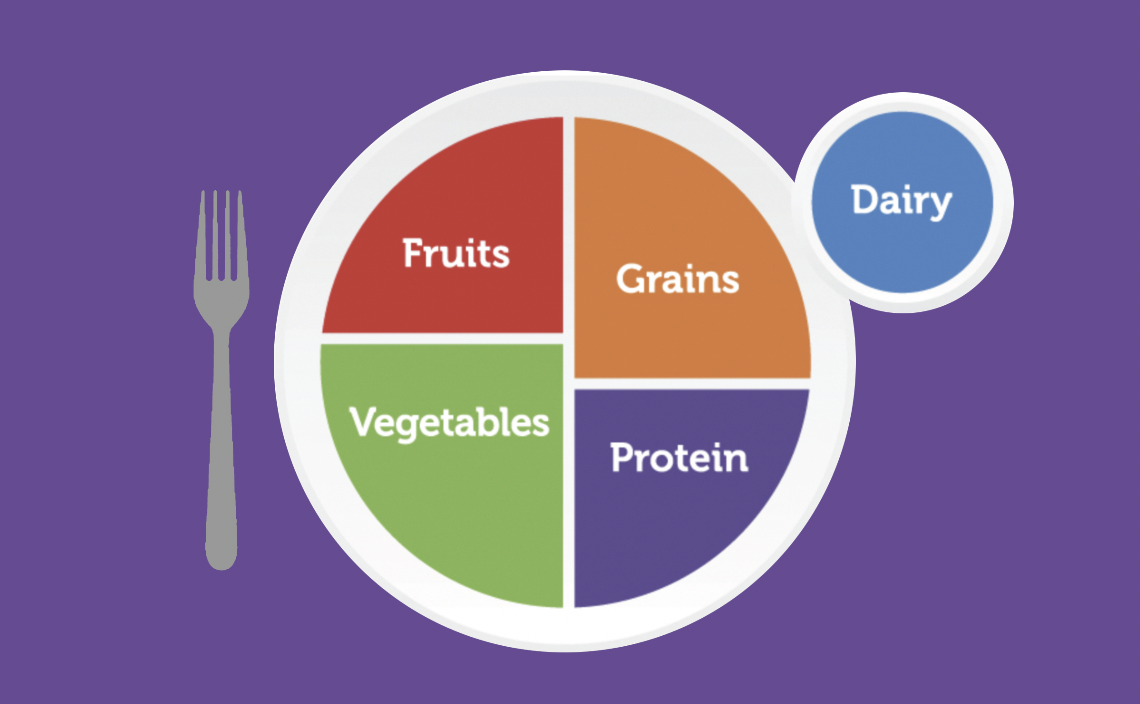Contents
- Using MyPlate to Give Your Child The Best Diet for Growth and Development
- MyPlate: A Nutrition Guide for Every Stage of Life
- Fruits and Vegetables: Eating the Rainbow for Health
- Grains: Prioritizing Whole Grains for Lasting Energy
- Protein: Essential for Growth and Development
- Dairy: Building Strong Bones with Calcium & Vitamin D
- Serving Sizes: Adjusting for Age and Activity Level
- Calorie Requirements for Kids Aged 1–12
- Managing Picky Eaters: Encouraging Variety Without Pressure
- The Top Questions About Children’s Nutrition
- A Healthier Future Begins Today
Using MyPlate to Give Your Child The Best Diet for Growth and Development
Navigating the world of child nutrition can feel overwhelming, but MyPlate offers a clear path forward. Based on the Dietary Guidelines for Americans (DGAs), MyPlate simplifies healthy eating into five essential food groups: fruits, vegetables, grains, proteins, and dairy. As someone who’s worked closely with families, I’ve seen firsthand how nutrition can impact a child’s growth and development. By improving nutrition today, we lay the foundation for a lifetime of good health and well-being.
MyPlate: A Nutrition Guide for Every Stage of Life
Whether you’re feeding a toddler or a pre-teen, MyPlate’s “bite-by-bite” approach helps break down nutrition into manageable steps. Instead of aiming for perfect meals every day, focus on balance across the week. If your child’s lunch today is heavy on grains and light on veggies, you can balance it out with a veggie-heavy dinner tomorrow.
The goal of MyPlate is to provide your child with the nutrition needed for energy, growth, and overall well-being. A typical meal might consist of fruits, vegetables, grains, protein, and dairy. Even if some meals are off-balance, maintaining a long-term focus on balanced nutrition will help your child thrive.
Fruits and Vegetables: Eating the Rainbow for Health
Fruits and vegetables should fill half of your child’s plate, as they offer essential vitamins, minerals, and fiber. These nutrients help with digestion, boost the immune system, and protect against chronic conditions like obesity and diabetes. A fun way to encourage this is by helping your child “eat the rainbow”—in other words, consume a variety of colorful fruits and vegetables daily.
Each color in fruits and vegetables brings its own unique set of benefits. For instance, beta-carotene from carrots supports eye health, while antioxidants from blueberries help fight inflammation. Introducing different colored fruits and vegetables not only makes meals more visually appealing but also provides a wider array of nutrients to support overall health.
- Fruits: Fresh, canned, frozen, or dried fruits all count toward daily fruit intake. A serving is 1 cup of fruit, 1 cup of 100% juice, or ½ cup of dried fruit.
- Vegetables: Vegetables can be raw, cooked, fresh, frozen, or canned. Include a variety from subgroups like dark greens, beans, red/orange vegetables, and starchy vegetables. A serving is 1 cup of cooked vegetables, 1 cup of vegetable juice, or 2 cups of raw leafy greens.
Parenting tip for Picky Eaters:
If your child is a picky eater, experiment with different textures and cooking methods. Some children prefer raw vegetables for the crunch, while others may enjoy them roasted or steamed.
Grains: Prioritizing Whole Grains for Lasting Energy
Grains are a key energy source, but it’s crucial to prioritize whole grains over refined grains. Whole grains like brown rice, oatmeal, and whole-wheat bread offer more fiber, vitamins, and minerals than refined grains such as white bread and pasta. They promote better digestion and provide long-lasting energy that supports your child’s growth and activity levels.
MyPlate recommends that at least half of your child’s daily grain intake come from whole grains. Grains include bread, cereal, tortillas, pasta, and grits. A serving is 1 slice of bread, 1 cup of cereal, or ½ cup of cooked pasta or rice.
Practical tip for Introducing Whole Grains:
If your child is used to refined grains, introduce whole grains gradually by mixing them with familiar foods. For instance, try combining whole-wheat and regular pasta in the same dish or offer whole-grain cereal at breakfast.
Protein: Essential for Growth and Development
Proteins are the building blocks of the body, essential for muscle growth and tissue repair. MyPlate emphasizes the importance of including a variety of protein sources, such as animal-based proteins (chicken, fish, eggs) and plant-based proteins (beans, lentils, nuts). A balanced diet incorporating both will ensure that your child gets all the necessary nutrients for optimal growth.
Protein also supports hormone production and the body’s immune system, making it a crucial component of any child’s diet. A serving of protein can be 1 ounce of meat, 1 egg, ¼ cup of cooked beans, or 1 tablespoon of peanut butter.
Tips for Increasing Protein:
Offer protein-rich snacks by pairing nuts or seeds with fruit, creating a nutritious and satisfying snack option for kids on the go.
If you’re looking for expert guidance on your child’s nutrition or need help with picky eaters, Uplift Therapy Center offers personalized feeding therapy and nutritional support.
Schedule Your Consultation Today
Dairy: Building Strong Bones with Calcium & Vitamin D
Dairy products like milk, yogurt, and cheese provide essential calcium and vitamin D, which support strong bones and teeth. If your child is lactose-intolerant, try offering fortified plant-based milks such as soy or almond milk, which also provide the same key nutrients.
For children under 2 years old, whole milk is recommended to support brain development. After that, switching to low-fat or fat-free options helps maintain calcium intake while reducing fat consumption. Dairy can be easily integrated into meals or snacks, such as a cup of yogurt for breakfast or a slice of cheese with lunch.
- Dairy: A serving size includes 1 cup of milk or yogurt, or 1½ ounces of natural cheese. Fortified plant-based alternatives should provide similar amounts of calcium and vitamin D.
Practical Tip For Adding Dairy:
Make dairy more fun by creating smoothies with milk or yogurt. Add fruits to make it a complete, nutrient-rich snack.
Serving Sizes: Adjusting for Age and Activity Level
Serving sizes for children differ based on their age and activity level. MyPlate offers easy-to-follow guidelines to ensure your child is getting the appropriate amounts from each food group.
- Fruits: 1–1.5 cups for children 2–4 years, 1–2 cups for children 5–8 years.
- Vegetables: 1–2 cups for younger children, 1.5–2.5 cups for older children.
- Grains: 3–5 ounces for younger children, 4–6 ounces for older children, with half of these coming from whole grains.
- Protein: 2–5 ounces for younger children, 3–5.5 ounces for older children.
- Dairy: 2–2.5 cups depending on age.
Practical Tip For Serving Sizes::
A simple rule of thumb is to serve one tablespoon of food per year of age. For example, a 4-year-old could receive 4 tablespoons of grains and vegetables at each meal.
Calorie Requirements for Kids Aged 1–12
Children’s calorie needs vary significantly based on their age, activity level, and growth patterns. Meeting these requirements helps support not just energy but also proper growth and development. Here’s a more detailed breakdown of calorie requirements:
- Ages 1–3: 1,000 to 1,400 calories per day. At this stage, children are rapidly growing, so they need enough energy to support this.
- Ages 4–8: 1,200 to 1,800 calories per day. During this period, kids’ energy needs increase, especially if they’re highly active. Balanced nutrition is essential for supporting cognitive and physical development.
- Ages 9–12: 1,600 to 2,200 calories per day. As pre-teens enter puberty, their energy needs rise to support growth spurts and increased physical activity.
Activity Level and Calorie Requirements:
It’s important to remember that calorie needs are influenced by how active your child is. More active children, whether through sports or outdoor play, will need calories on the higher end of the range to maintain their energy levels and support muscle development.
Balancing Calories and Nutrition:
While it’s important to meet these calorie needs, the quality of calories is just as vital. Focus on providing nutrient-dense foods that include a balance of fruits, vegetables, whole grains, protein, and dairy to ensure your child is getting the vitamins, minerals, and macronutrients necessary for healthy growth. Foods high in added sugars or empty calories should be limited.
For more precise caloric needs, especially for children with specific health considerations or different activity levels, consult a pediatrician or make an appointment with me to tailor these recommendations.
Managing Picky Eaters: Encouraging Variety Without Pressure
Dealing with picky eaters is a challenge many parents face, but the key is patience and consistency. Don’t pressure your child to finish everything on their plate; instead, focus on introducing new foods gradually alongside familiar favorites. It may take several tries before your child warms up to a new food, and that’s okay.
One strategy I’ve seen work is to offer new foods in small portions and in a no-pressure environment. Think of it as slowly building your child’s tastes, one small step at a time. Over time, they’ll develop a broader palate and a healthier relationship with food.
Practical Tip For Introducing New Foods:
Introduce new foods by pairing them with a familiar favorite. For instance, serve a small portion of steamed broccoli alongside a well-loved pasta dish.
The Top Questions About Children’s Nutrition
How do I know if my child is getting enough calories for their age?
You can monitor your child’s growth patterns, energy levels, and activity level. If you notice fatigue, lack of energy, or slowed growth, it may be time to assess their calorie intake. For personalized advice, consult a pediatrician or nutritionist.
What snacks can I give my child that are healthy and balanced?
Offer nutrient-dense snacks like apple slices with peanut butter, yogurt with granola, or carrot sticks with hummus. These snacks provide a good balance of protein, healthy fats, and fiber.
How can I reduce added sugars in my child’s diet?
Focus on offering whole foods like fruits for natural sweetness. Avoid sugary drinks, processed snacks, and desserts. Instead, try homemade treats with lower sugar content or natural sweeteners.
How can I help my child build lifelong healthy eating habits?
Encourage participation in meal planning and preparation, offer a variety of healthy foods, and model balanced eating yourself. Creating a positive mealtime environment helps reinforce healthy habits over time.
A Healthier Future Begins Today
MyPlate provides a solid framework to help parents build balanced, nutritious meals for their children. By incorporating a variety of fruits, vegetables, whole grains, proteins, and dairy, parents can support their child’s physical and mental development and set them on a path toward lifelong health.
Good nutrition is one of the greatest gifts you can give your child. By taking small, consistent steps toward balanced meals today, you’re building the foundation for their health and happiness tomorrow. For personalized guidance or help with picky eaters, don’t hesitate to reach out to Uplift Therapy Center. We’re here to support you in creating the healthiest future for your child.
Schedule Your Consultation Today
Links and Resources for this article
- 10 Ways to Ensure Good Nutrition for Child Development
https://www.metropediatrics.com/pediatric-blog/10-ways-to-ensure-good-nutrition-for-child-development - Stunted Growth and the Nutrients Children Need to Catch Up
https://www.nutritionnews.abbott/pregnancy-childhood/kids-growth/stunted-growth-and-the-nutrients-children-need-to-catch-up/ - The Role of Nutrition in Child Development
https://inspirechildren.com/the-role-of-nutrition-in-child-development/
Impact of Nutrition on Child Development: A Study
https://pmc.ncbi.nlm.nih.gov/articles/PMC4785470/




